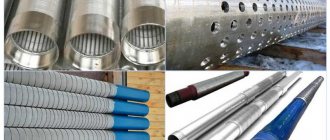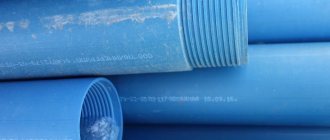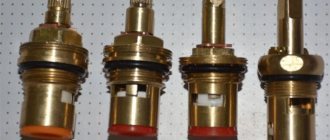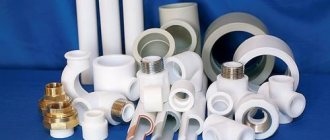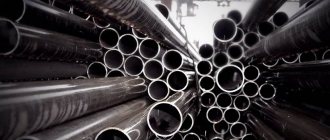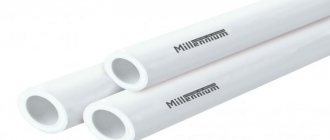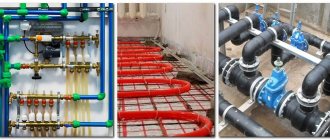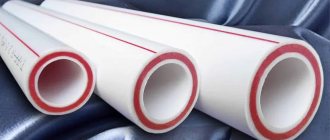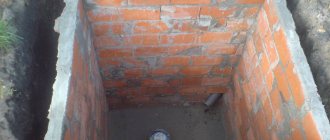Is cleaning necessary?
A number of indirect signs indicate that well water needs to be purified. You may encounter:
- Sludge, indicating the accumulation of undesirable substances in the water, the appearance of which is caused by the processes of decay.
- A characteristic metallic taste that worsens the taste characteristics of the produced water. After installing the filter, the organoleptic properties of the liquid are significantly improved.
- Plumbing fixtures and dishes have a yellowish tint. Its appearance is facilitated by dissolved salts and a number of other substances deposited on the surface.
- Cloudy sediment with some silt due to the presence of harmful bacteria.
- Characteristic smell of “rotten eggs”.
Water should not have an unpleasant odor or impurities Source build-experts.ru
Tips for choosing a filter
Which well filter should you make in your garden? There are some tricks to help you figure this out:
- The choice of water filter should be made according to the size of the rock particles surrounding the walls of the well. The smaller they are, the smaller the cells of the filter element should be.
- For deep-sea structures, metal parts should be taken, since plastic ones may not withstand the forces applied to them.
- It is advisable to install filter installations at wells, as this will improve the quality of water. You should take on such work after studying additional literature or consulting a specialist.
( 1 ratings, average: 5.00 out of 5)
Previous entry Well drilling machine
Next entry How to purify water from country wells
Cleaning steps
A well water purification system for a private home includes several stages:
- Pre-cleaning. Allows you to get rid of coarse impurities: sand, clay residues, various mechanical particles. For this purpose, coarse filters or settling tanks are used. This stage is mandatory for any cleaning system, as it can significantly increase the service life of the installed equipment.
- Removal of dissolved chemical impurities and gases . Allows you to get rid of excess amounts of magnesium, iron and other components. The cleaning method and type of filter used are selected taking into account the composition and amount of chemical impurities.
- Softening . Using the ion exchange method, salts are removed from water. They precipitate and are then removed from the water in a subsequent purification step.
- Fine cleaning . A filter with a specific configuration helps to filter out the smallest particles. Their size is 5 microns.
- Disinfection . At the biological treatment stage, it is possible to get rid of unwanted bacteria and microorganisms.
- Drinking preparation . Reverse osmosis systems are mainly used. Relevant exclusively for the preparation of water intended for the preparation of water or drinking.
The degree of purification may vary depending on the filter device Source vodopodgotovka-vodi.ru
Water purification from a well for a private home may include various stages.
A chemical analysis of the extracted liquid will help determine the number of stages. The result obtained will allow you to accurately understand which substances have exceeded their concentrations and in what quantities.
When is filtration necessary?
Water from any well needs to be cleaned with a filter.
Even if all chemical indicators are normal, routine mechanical cleaning is necessary. A coarse filter successfully copes with this, the task of which is:
- prevent various mechanical impurities from entering the water,
- protect well equipment from premature wear.
If well water is used to supply water to the entire house, small particles of rock can cause breakage of water supply shut-off elements and lead to breakdown of the entire system.
Installing a mechanical well filter is the first stage of cleaning .
The types of subsequent filters will depend on the result of a chemical analysis, which will indicate which elements need to be filtered.
If the water has increased hardness, high levels of iron or hydrogen sulfide, it is necessary to install additional filtration systems .
They will help:
- Remove harmful components;
- Organic compounds;
- Soften the water;
- Improve its taste;
- Make it safe to drink.
Main types of filtration equipment for pre-treatment
The design and operating principle of filters may differ significantly. Used to remove mechanical impurities with different fractional compositions. Some allow you to get rid of particles with a size of 20 - 100 mm, while others effectively cope with inclusions of 0.25 - 0.5 mm. The area of use and the achieved effect largely depend on the type of soil in a particular area.
Gravel
A simple and economical option. Allows you to get rid of large particles. Increases the life of the well. A gravel filter for water from a well has certain requirements for the installation procedure:
- The transverse dimensions of the pipe are smaller than the diameter of the well.
- The fractional composition of the gravel backfill should be on average 5 times greater than the size of small rock particles.
- The height of the sprinkling depends on the gravel layer. Usually 0.9 - 2 m. The more salts dissolved in the water, the higher the gravel layer is poured.
There are a number of requirements for the filter used. Source piccy.info
If the aquifer contains predominantly sand, the gravel system will not cope well with the task. It is advisable to use a mesh or wire type filter for a sand well.
The advantages of such equipment include:
- Simplicity of design.
- Prevent possible rock collapse.
- Reduce the likelihood of equipment corrosion.
- Safety of use. When using it, you don’t have to worry about the taste of the water.
See also: Companies specializing in utilities: water supply, heating and sewerage.
Reticulate
Filters for water wells of this type are made with cells of different shapes and sizes. This allows you to retain small particles of various rocks. They are widely used to purify water produced in areas with a clay-sand layer.
According to the configuration of the cells of the product, there are:
- Square.
- Keeper or multilayer.
- Galunny.
The size and type of cells are selected individually. The size and configuration of mechanical impurities contained in a test batch of water extracted from a well are taken into account. The area of square cells varies in the range of 0.12 – 3 mm2.
Various materials are used to make the strainer. Stainless steel products have proven themselves well. They are not afraid of prolonged exposure to water. If you follow the manufacturer's recommendations, their service life reaches 30 - 50 years.
The size and shape of the cells affects the functionality Source www.kai.by
The size of galloon and keeper mesh includes two numbers: the number of horizontal and vertical wires per unit area. Thus, the dimension 6/40 means that each square contains six vertical wires and 40 horizontal ones.
Mesh models are easy to install. Allows cleaning. Repairable. However, they can cause a decrease in water pressure due to the high resistance of the materials used. Not suitable for water with a high iron content: the resulting sediment clogs the cells, the product begins to wear out intensively and you have to look for a new one.
Slotted
Such filters for water purification in a private house from a well are suitable for a water supply system mounted on unstable soil prone to collapse:
- Sandy.
- Galechny.
- Shchebnev.
A thoughtful design allows you to retain particles of different fractional compositions inside the filter. Can be mounted on systems with low pressure. The basis of slotted models is a pipe with a characteristic perforation. The sufficient strength of the material used and the presence of a special stiffening belt allows the product to withstand high pressure. However, during operation there is a risk of clogging the cracks.
The slits are located at equal distances Source mozfiles.com
The number and size of slots are selected individually, taking into account water hardness. The higher this indicator, the larger the slots to be formed should be. To increase the versatility of the device, a combined hole shape is chosen.
How to take into account the terrain?
The choice of filter type depends on the type of aquifer in the area where the well is planned to be drilled.
- for rocky and semi-rocky rocks it is worth choosing slotted and mesh products,
- keeper nets are installed in coarse-grained and gravelly sandy soils,
- For medium and fine-grained sand, galloon mesh filters are used.
Water in a particular area has a certain set of quality characteristics that can be easily determined using chemical analysis .
Important. If the permissible dose, for example iron, is exceeded, the mandatory installation of an additional carbon filter or other treatment facilities is required.
Main types of iron removers
Filters for water from a well to a private home allow you to get rid of not only iron, but also various chemical impurities: fluorides, nitrates, nitrites, lead, radium and arsenic. The presence of such substances is unacceptable. An increased concentration of iron can harm human health. To reduce its concentration the following are used:
- Non-pressure installations.
Water coming from the well flows through nozzles into a large reservoir. Its capacity starts from 600 liters.
The water level is controlled using special sensors that determine the upper and lower levels. To prevent the tank from overflowing, a special pipe is provided through which, if necessary, excess water is discharged. As soon as the container is completely filled, the compressor turns on and air begins to flow inside and is distributed using a divider.
In the process of spraying water, dissolved iron combines with oxygen, forming a trivalent compound. Mesh models are used to remove the resulting sediment.
Gravity water treatment system Source wixstatic.com
Installation of a water filter for a house from a well
To choose the right filter for purifying water from a well, you need to get acquainted with the principle of its design and operation. Well equipment solves the following problems:
- retains solid impurities in front of the casing pipe entrance;
- keeps the well from collapsing.
Downhole equipment includes:
- filters;
- perforated supports;
- settling tank
Each element can be made in several versions for functioning in different aquifers. The basis of the filter for the well pipe is perforated metal. The holes in it are oblong or round, 1-2 cm in size. Slot-like holes allow more water to pass through, but weaken the structure.
The perforation area should be 20–30% of the entire circumference of the pipe. The filter base and the well line are made of the same material, because their coupling must be airtight.
When using metal operating parts, the base must also be made of stainless steel. If plastic elements are used, the base must be selected from plastic, because metal and plastic will not create a hermetically sealed connection.
The filter layer should not fit tightly to the perforated pipe. To do this, create a frame of vertical rods or loosely wound wire around the filter. Make a gap of several millimeters between the turns.
In filter configurations for water intakes, there are several options for the filter layer:
- mesh;
- wire;
- combined.
For the first, the filter part is made of mesh, for the second, a wedge-shaped wire is used, which is wrapped around the filter body.
The most convenient option is a mesh filter. If damage occurs, only part of the filter requires replacement. High-quality metal construction can last up to fifty years. If you prefer high-quality water purification, you should buy a mesh filter for a well. Plastic filters are not strong enough and cannot withstand heavy loads. Compared to stainless steel, they have a shorter service life.
A wire filter is more durable because the material is thicker than mesh. The cost of such equipment is accordingly higher. When using galvanized wire, the maximum service life of the filter will be 7 years.
This is interesting!
Hydrogen sulfide in a well: what the threat is and what to do Read more
The size of the cells and their shape in mesh filters vary. They need to be selected depending on the size of solid particles found in the water after the analysis.
An additional filter layer of gravel is placed near the well pipe. Coarse sand and small smooth pebbles are also suitable for these purposes. They are a natural high-quality filter capable of self-cleaning.
When constructing a filter for a well, a formula with the exact parameters of the aquifer is used. Although builders usually focus on professional experience.
- With a casing pipe diameter of 10–15 cm, a one-meter high filter is required for sandy water horizons. The optimal size of the cleaning part is two meters.
- If there is too fine sand in the water, you need to make a filter for the well twice as high as usual. If sediment in the form of dust is present, six-meter equipment can be used if the aquifer depth is sufficient. Use a filter diameter that allows you to freely install the pump in the well.
When the source is already in operation, it will not be possible to change parts. Therefore, they immediately choose high-quality materials and elements that can last up to 30 years or more and do not require repairs.
Reverse osmosis plants
The devices help to completely disinfect water. They allow you to get rid of unwanted bacteria and achieve high-quality cleaning. A multi-stage well water purification system allows you to get rid of various types of impurities. The operation of such equipment is based on the principle of liquid passing through a membrane under high pressure. A special pump is used to supply water.
The design of the membrane is such that only water molecules pass through it. The impurity remains outside. After cleaning, the accumulated dirt is simply washed off the surface of the membrane and sent down the drain. The presence of a self-cleaning function significantly increases the efficiency and service life of such equipment.
Having passed through the membrane, the water enters the flasks with a carbon backfill or a mineralizing layer. This is necessary to enrich it with microelements necessary for humans, since after passing through the membrane, the water’s parameters are close to distilled.
Sorptive
In the first option, carbon compounds, ion exchange resins and silver are used ; each element solves its own problem and has its own removable cartridge, which requires periodic replacement.
The frequency of cartridge replacement depends on the quality of the water.
Attention. Before installing a filter for chemical cleaning, a preliminary analysis of the water sample is carried out for the presence of various impurities.
Based on the analysis results, it is easy to determine the feasibility of installing various filter elements.
Chemical analysis allows you to determine what degree of purification is needed for water: deep or partial, aimed at removing specific chemical elements and impurities.
Video description
Reverse osmosis fights not only impurities, but also odors, as evidenced by the following video:
Systems are usually installed directly under the sink. A separate tap is used to supply drinking water. Replacement of the membrane and backfill must be carried out at specified intervals.
Purified water is close to distilled Source thewalls.ru
Uncomplicated and effective home design
How to make a water filter? For this you will need:
- charcoal;
- a piece of cotton fabric;
- plastic bottle with screw cap.
A filter layer is created as follows: activated carbon is prepared - crushed to particles of 4-5 mm, then boiled in water for 5-7 minutes, cooled and placed in a bottle (filled to a third). A hole with a diameter of approximately 3 mm is made in the cork, into the neck of the bottle the fabric is laid, the bottom is cut off. This filter is done in a hurry, but the water flows from it clear.
To make a filter with your own hands, you will need charcoal.
Disinfection
An important step to ensure that water meets regulatory requirements. To remove bacteria and unwanted microorganisms, the following are used:
- Blocks filled with sorbents of various types . Products containing coal have become widespread in everyday life. Thanks to its use, the filter improves the organoleptic properties of water.
- Ultraviolet . The device consists of a steel case with a quartz case and an ultraviolet lamp located inside. Passing through the device, water is irradiated by an ultraviolet stream and is thereby disinfected. The radiation dose depends on the level of contamination of water by microbiological organisms. The device allows vertical and horizontal placement.
- Chlorination, fluoridation . The method can be called traditional. The resulting suspension is subsequently removed. It is practically not used in private home water supply systems.
What height should I choose?
The height of the filter directly depends on the throughput of the soil and the diameter of the production pipe . The lower the throughput of the aquifer, the higher the filter should be.
To accurately calculate the height of the filter, an analysis of the components of the aquifer is required, which will be quite expensive when drilling an individual well.
The following indicators are used as a basis:
- The height of the filter must be at least 1 meter;
- Sandy soil has poor throughput, so the height of the filter should be at least 2 meters with a pipe diameter of 10-15 cm;
- Fine sandy soil will require a pipe height of about 4 meters, a dusty structure will require a height of 5-6 meters.
Briefly about the main thing
The filter is an important element in the water supply system of a private home, using a well as a source. With the correct selection of the model, it allows the produced water to comply with regulatory requirements. This makes it possible to use it not only for technical needs, but also for drinking.
Before you begin selecting filtration equipment, you should do a chemical analysis of the water. It will allow you to understand what impurities need to be gotten rid of and in what quantities.
To achieve the best effect, you should take care of multi-stage cleaning. Consistently passing through filters of different types, water can get rid of mechanical impurities, harmful substances and bacteria. Subsequent enrichment with useful elements will ensure compliance with regulatory requirements.
Ratings 0
Features for a country house or cottage
The choice of filter depends on the purpose for which the water will be used.
In the apartment, water is used for drinking and cooking.
This circumstance requires a more advanced cleaning system: sorption or reverse osmosis filters.
They are quite expensive, but have a number of advantages :
- Excellent water purification;
- Have great productivity;
- Long service life.
At the dacha and in a country house, most of the water is used for household needs, so installing expensive purification systems is not always advisable.
When choosing a well filter, it is important to determine the daily water requirement , which depends on the number of residents and purposes of use.
Reference. Borehole filters with lower capacity will cost less.
